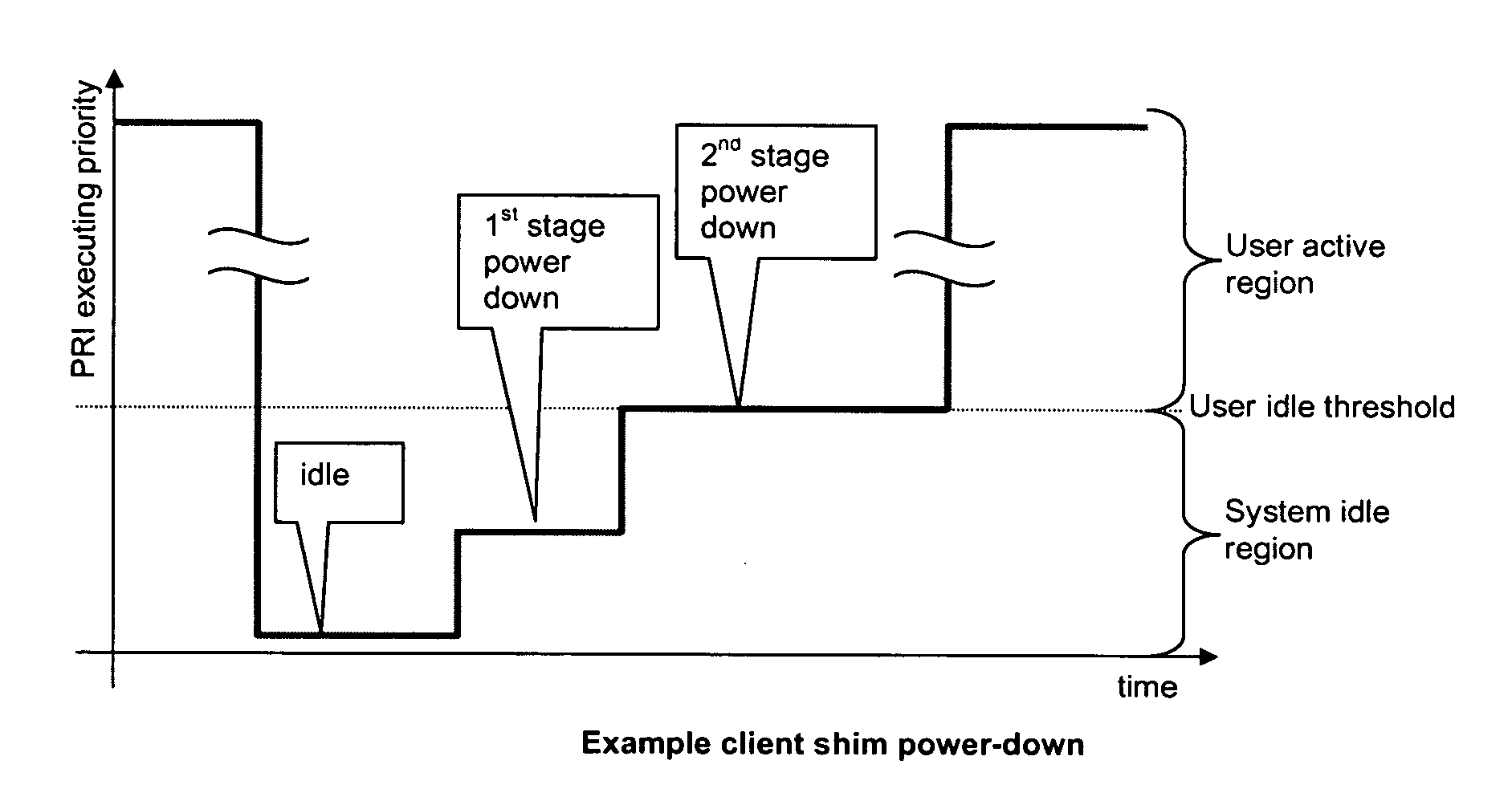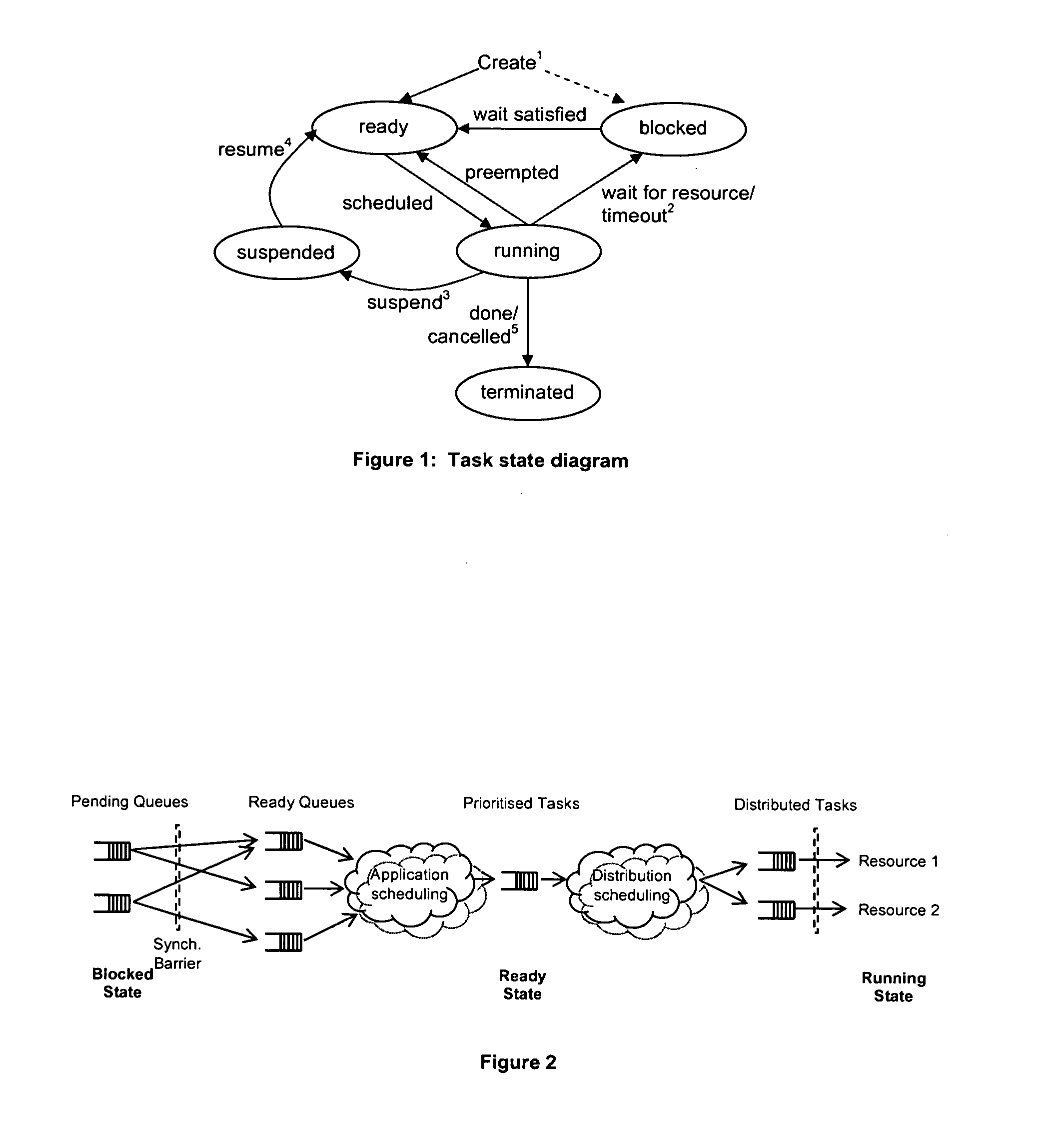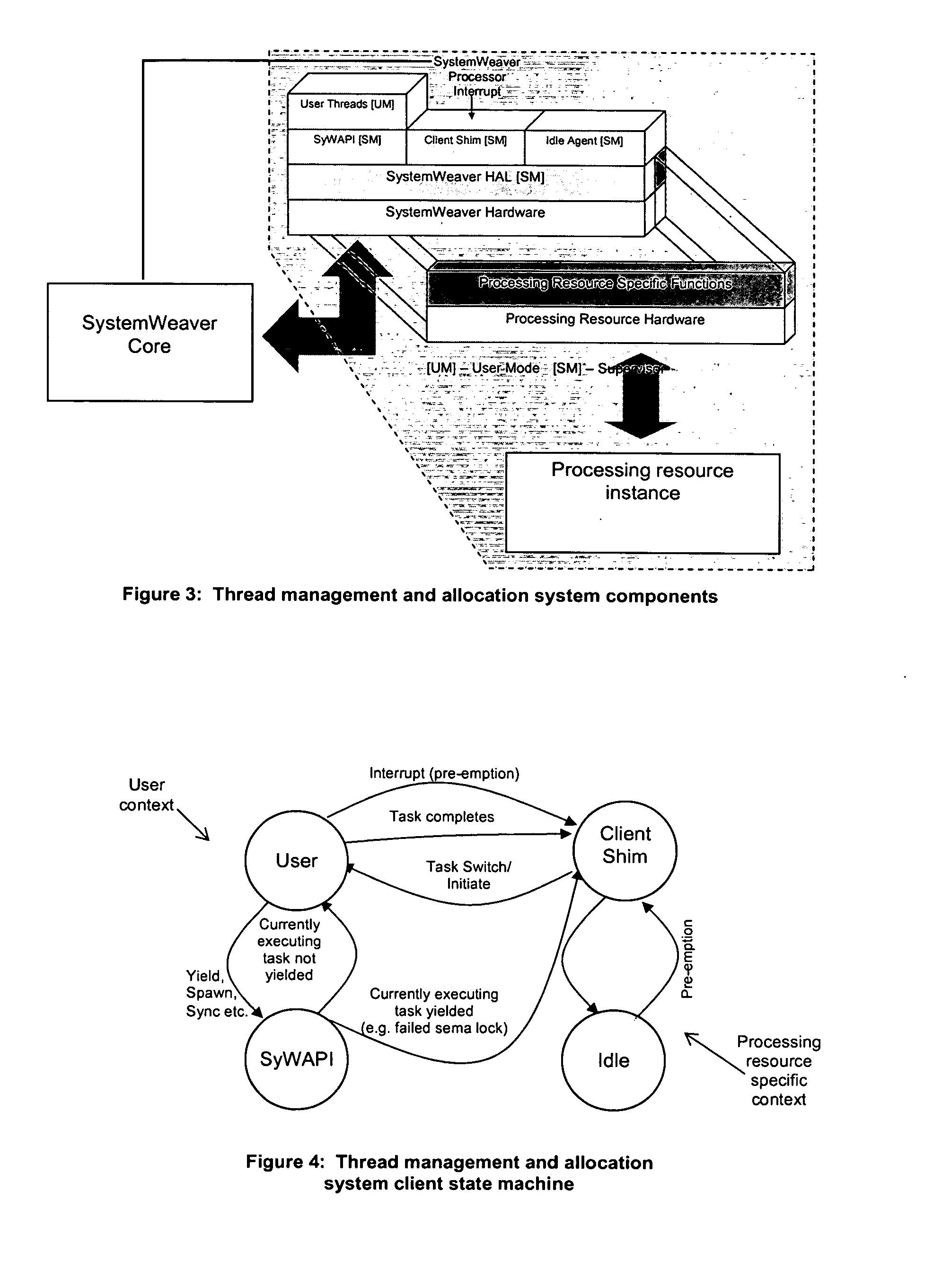Managing power consumption in a multicore processor
a multi-core processor and power consumption technology, applied in multi-programming arrangements, instruments, generating/distributing signals, etc., can solve problems such as adding additional scheduling problems, achieve efficient allocation of executable transactions, threads, and improve application performan
- Summary
- Abstract
- Description
- Claims
- Application Information
AI Technical Summary
Benefits of technology
Problems solved by technology
Method used
Image
Examples
example
[0363]FIG. 29 shows the “executing priority” of a processing resource instance (PRI) as time passes in an idle state using ascending priority. In the first instance, the idle task sets the priority to its lowest possible setting, giving the PRI the highest possible chance, when compared to its distribution pool peers, of a task assignment from the scheduler.
[0364] After time the idle task invokes a power down mode, perhaps supported within the processing resource micro-architecture. At this point the idle task increases the executing priority of the PRI to reduce the likelihood of a task assignment (PRIs in the previous state will take precedence).
[0365] Similarly after another period, the idle task (or some other agent), increases the executing priority still further, (perhaps isolating the power to the PRI—thereby eliminating static leakage). The modulation of the priority makes the PRI's eligibility for a task allocation still lower—consistent with the cost (in this case in-rus...
examples
[0738]FIG. 68 shows the TSSM scheduler processing associated with the push of a thread descriptor (node #5) into a static scheduling element (node #3). The first intra-tier scheduling operation takes place within the context of the reschedule function and is with respect to the parent node #3. Reschedule then moves up a layer of hierarchy and calls inter-tier scheduling with the parent node #2. The iteration immediately after this finds the parent node #1, which is a DQD. Hence there are no further calls to the intra-tier scheduler and a scheduling comparison is done between the metrics of the most eligible candidate stored within the root node and the executing thread, stored within the dispatch node. In this case, a pre-emption is appropriate and a dispatch queue event is communicated to the TSOM.
[0739]FIG. 69 shows a more cascaded scheduling hierarchy. Here, an additional call is made to the intra-tier scheduling function for the additional layer of hierarchy. Note though, that ...
PUM
 Login to View More
Login to View More Abstract
Description
Claims
Application Information
 Login to View More
Login to View More - R&D
- Intellectual Property
- Life Sciences
- Materials
- Tech Scout
- Unparalleled Data Quality
- Higher Quality Content
- 60% Fewer Hallucinations
Browse by: Latest US Patents, China's latest patents, Technical Efficacy Thesaurus, Application Domain, Technology Topic, Popular Technical Reports.
© 2025 PatSnap. All rights reserved.Legal|Privacy policy|Modern Slavery Act Transparency Statement|Sitemap|About US| Contact US: help@patsnap.com



